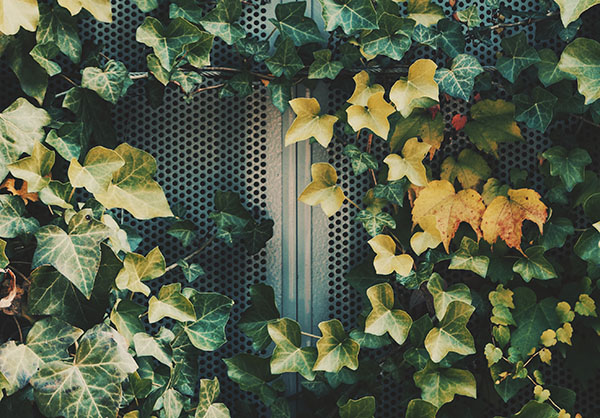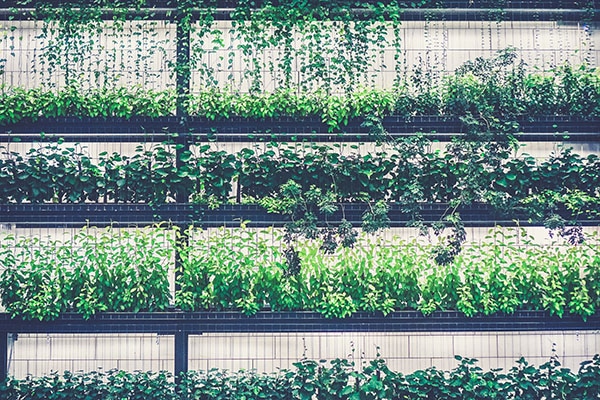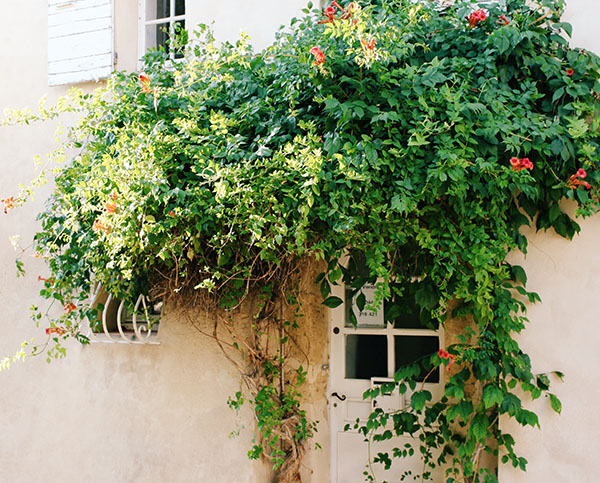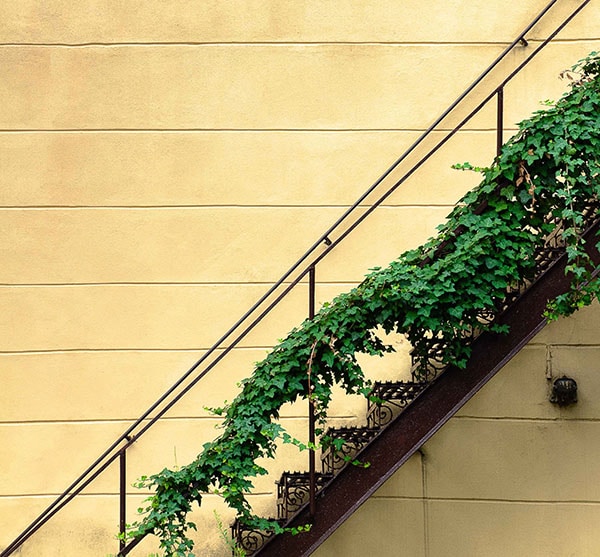In this article, you’ll find:
- The benefits of using climbing plants.
- How to use climbing plants to create a vertical garden.
- Our favourite types of climbing plants for the home and garden.
Why limit your garden to the ground when you can go upwards too! Climbing plants are a great way to bring some greenery to your home and garden, even if you have limited space.
It’s time to grab the gardening tools and get your hands dirty.
Related reads:
- 4 Low maintenance plants for your garden
- Top 5 garden maintenance tips for winter
- Build your own blooming veggie garden

Why use climbing plants?
We don’t have to tell you how beneficial it is to your wellbeing to be surrounded by plants. Climbing plants are a variety of plant species favourited by gardeners for their ability to grow extremely fast and wrapping around or attaching themselves to almost any surface. This can be used to create a beautiful garden feature, a feature wall, shade or even add some much-needed privacy to your garden.
How do climbing plants work?
Climbing plants get their name because they do just that—climb. Depending on the species, they achieve this in different ways. Most gardeners will separate climbing plants into to two distinct groups; vines or bines.
Plants falling into the vine category will typically create their own stems, roots or tendrils to attach themselves to almost any surface. On the other hand, there are bines, which wrap themselves around any object they can find for support, such as a lattice, tree or fence post.
However, some plants will climb easier than others with some requiring training to climb, such as roses. This can be achieved by tying them to wires or poles.

How to create a vertical garden using climbing plants.
Creating your own vertical garden can be quite simple. First, we recommend finding a feature point, such as a wall, an old wooden ladder, a lattice or even a fence to attach the plants to. Make sure this location is getting the correct amount of sunlight for the plants you plan to use.
Start with some plant pots with drainage holes and good quality soil and begin planting. As your climbing plants begin to grow, they will be able to begin wrapping themselves around whatever they can find and grow upwards. You may need to adjust some tendrils to get them to go where you want, depending on the plant type.
Add more variety and colour to your vertical garden by using different types of plants like succulents or hanging ferns.
The Best Climbing Plants in Australia for a Vertical Garden
Think outside the box by using fruits and vegetables climbing plants.
Tomatoes, grapes, beans, peas and strawberries are all types of fruits and vegetables that can be used as climbing plants in a vertical garden.
Adding fruits and vegetables to your vertical garden is both aesthetic and functional. Even on an apartment balcony (although check with your body corporate first) you can grow some delicious, healthy treats.
Some of our favourites include tomatoes, grapes, beans, peas and strawberries. By keeping them well maintained, you’ll always have ingredients on hand to make a fresh salad or snack.

Would it be a vertical garden without vines?
Not only are vines an impressive looking climbing plant, they grow rapidly too.
Take your garden to the next level by planting a variety of vines. As we mentioned, these will grow incredibly fast, so you will soon have a lush and leafy garden to admire.
There are many types of flowering vines, so it’s an easy, quick way to add a burst of colour to your vertical garden. We love the fragrance of the jasmine vine and the beautiful lavender colour from the wisteria.

Climbing plants can also be used indoors for unique décor.
Bring your climbing plants indoors to create a natural wonderland in any room.
Some varieties of climbing plants will thrive indoors and can make a beautiful addition to a bedroom, home office or kitchen. Like any other indoor plant, low light climbing plants are best placed out of direct sunlight and watered weekly.
We suggest using devil’s ivy, which is perfect for those who are just beginning to get a green thumb. They’re low maintenance but still provide beautiful green foliage year-round.

Ready to start some planting? Your local nursery or garden centre near you will be able to help you find everything you need for your dream climbing plant vertical wall.
Feature photo by Frank Hill from Pexels





